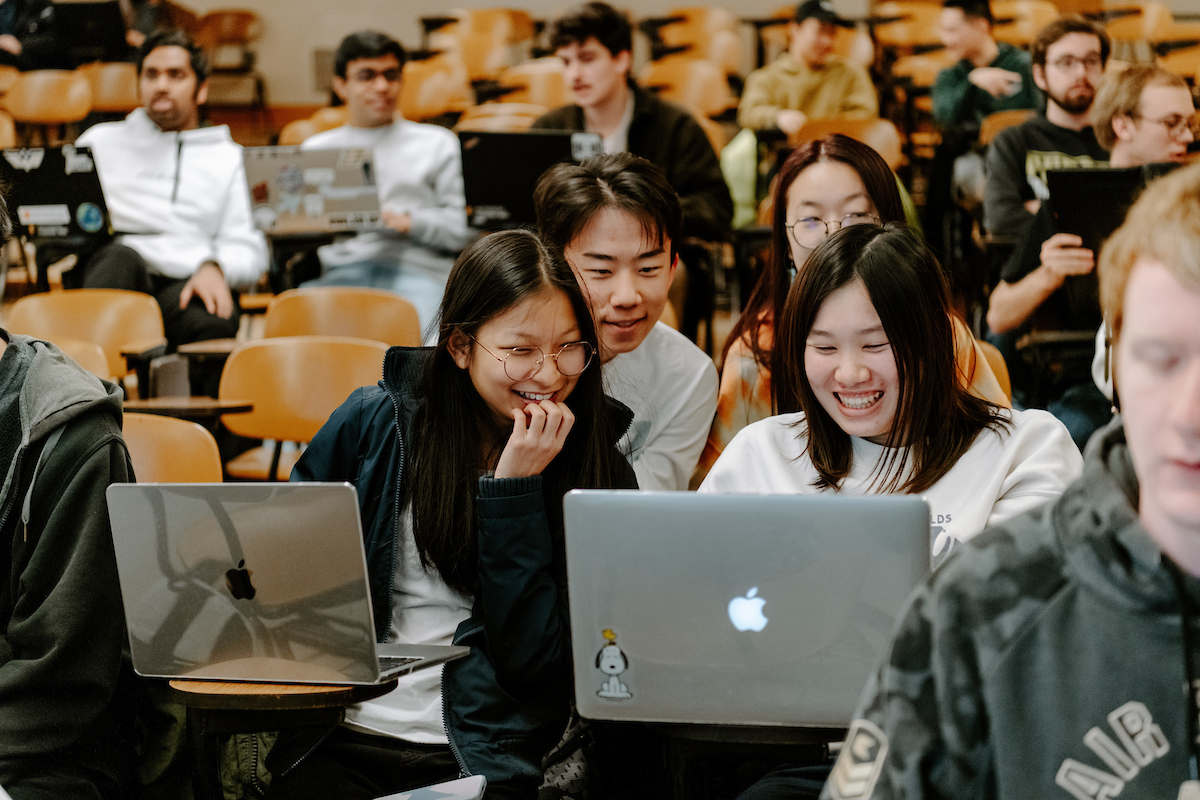
Though Purdue University’s mission to build and further knowledge has remained steady over the last 150 years, evolving technology allows Boilermakers to constantly approach teaching and learning in new ways. Today, an innovative type of teaching assistant (TA) using artificial intelligence (AI) is being implemented in classrooms across campus.
Traditionally, if a student doesn’t understand something on an assignment or in their reading, they have to wait for an instructor to give them advice during office hours or over email. But last year, students in IE 343: Engineering Economics were provided with an alternative: ask the AI TA.
“Thanks to this technology, students don't have to struggle to understand a problem or wait a couple of days to get feedback from a TA,” says Hua Cai, an associate professor in industrial engineering who utilizes the technology in their classroom. “The AI immediately gives them direction on how to more effectively solve their problem.”
Both Cai and visiting assistant professor Erham Karakaya co-led this project with the help of graduate student Zhuoli Yin. The three colleagues worked to design and develop this new technology, which they named Arthur in honor of Arthur M. Wellington, who made contributions to the field of engineering economics beginning in 1877.
Since its creation, Arthur has been improved each semester using student feedback and assessments of the tool’s grading and feedback capabilities.
“We train the AI model using previously graded homework. So, when students submit an incorrect answer on a new assignment, the model can figure out what their mistake may be and help them implement effective changes,” shares Cai.
Students have reportedly asked for more incorporation of the AI TA in the classroom, with the software having an overwhelmingly positive impact on many students.
“A survey we conducted showed that students who actively use the AI TA tend to perform better in the course than students who choose not to use it,” says Cai. “We didn't make using the tool mandatory, so it was completely up to the students.”
There are possibilities for Arthur to be trained and implemented into other courses at Purdue, especially those focused on advanced math and STEM. “Anybody who wants to use this tool in their course should start collecting homework data now so they can accumulate enough data to teach the AI,” urges Cai.
Any questions about the technology or its implementation in the classroom should be directed to Hua Cai at huacai@purdue.edu.
Communication Team
Student Success Programs, andrea@purdue.edu

